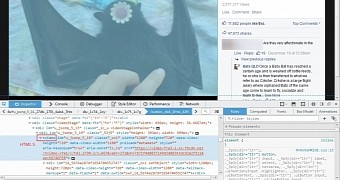Facebook announced today that it would no longer serve videos via Flash anymore, ditching the much-maligned technology for the newer, cooler, and much safer HTML5 alternative.
At the end of January, YouTube announced it was giving up Flash and replacing it with HTML5 video by default for all its users. The move was extremely well received, and soon after more and more services started following Google's lead.
Over the summer, Facebook hired Alex Stamos as CSO (Chief Security Officer), formerly at Yahoo. Soon after Mr. Stamos was hired, he made some waves over the summer, when he publicly asked Adobe to announce an EoL (End of Life) timeline for Flash. While there are other reasons why Facebook says it ditched Flash, this may have also played a big part.
People are engaging more with the new HTML5 player
According to Facebook's Daniel Baulig, outside well-known security reasons, HTML5 also had some benefits, such as the dev teams’ ability to quickly deploy site-wide changes without having to recompile the player's SWF file every time, integration with well-established code testing platforms, and better accessibility (a11y) support.
"Not only did launching the HTML5 video player make development easier, but it also improved the video experience for people on Facebook," says Mr. Baulig. "Videos now start playing faster. People like, comment, and share more on videos after the switch, and users have been reporting fewer bugs."
HTML5 videos are currently available on Facebook's News Feed, Pages, and in the Facebook video player embedded on third-party sites.
The HTML5 version of the video player has been quietly deployed for users with modern browsers for some time, and only recently has the team started adding the HTML5 version, via fallbacks and various polyfill scripts to older browsers. Of course, where HTML5 is not supported, the older Flash version will be used instead.

 14 DAY TRIAL //
14 DAY TRIAL //